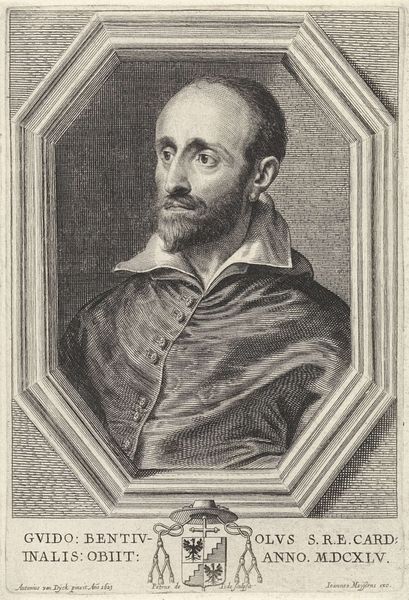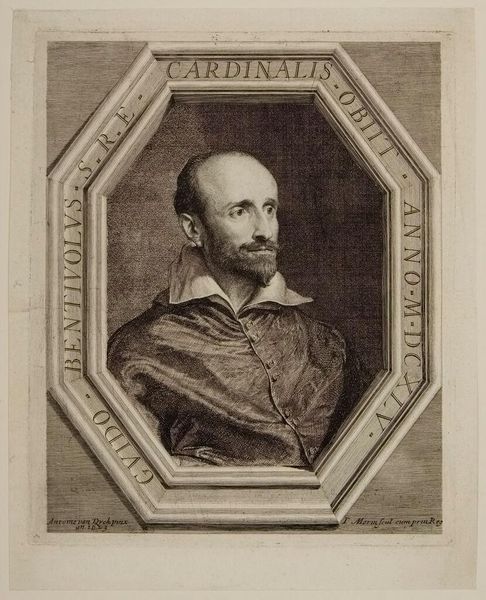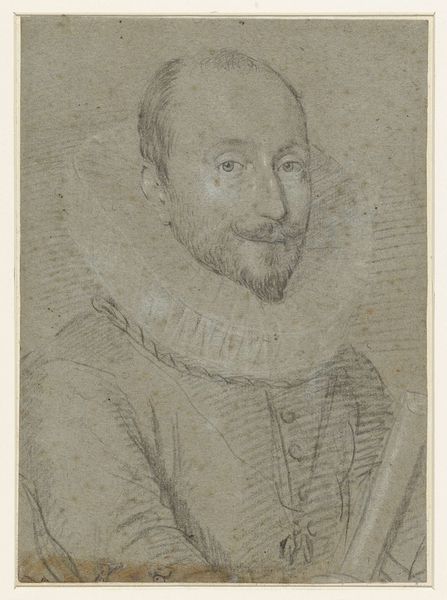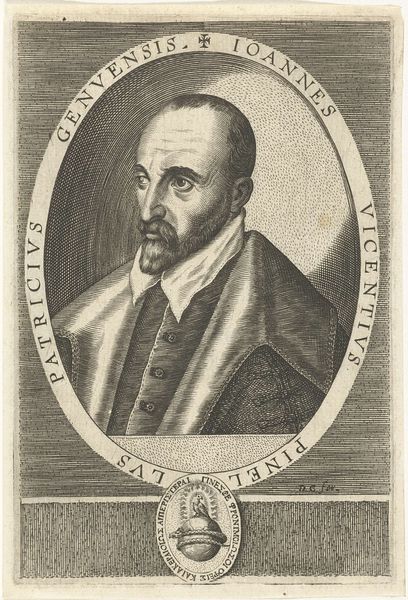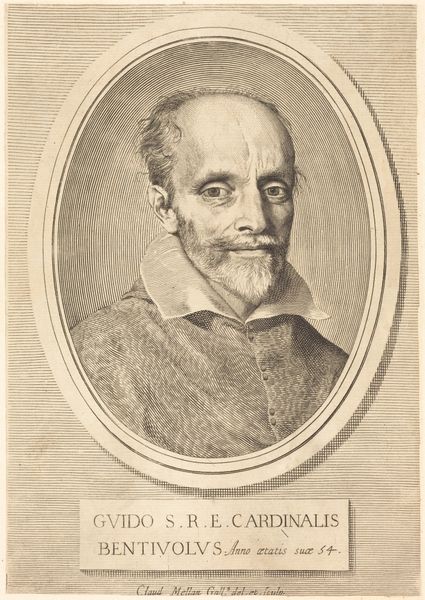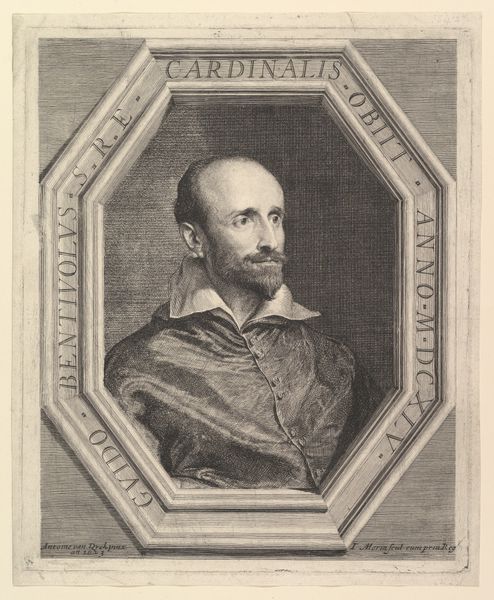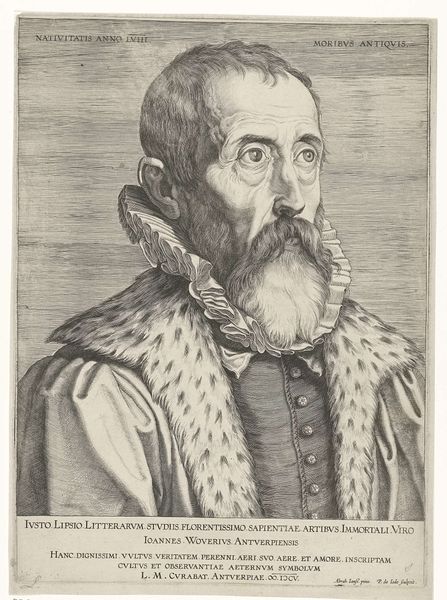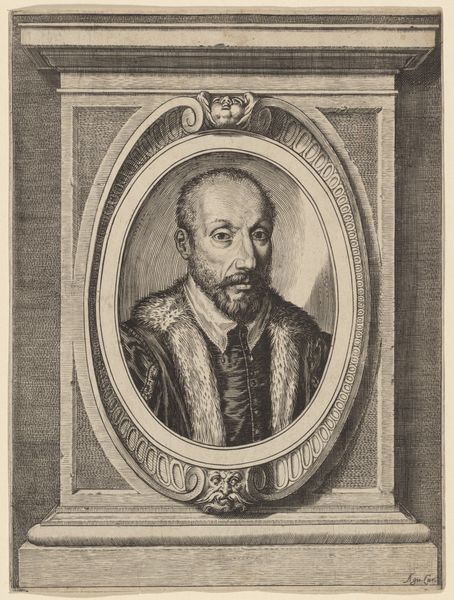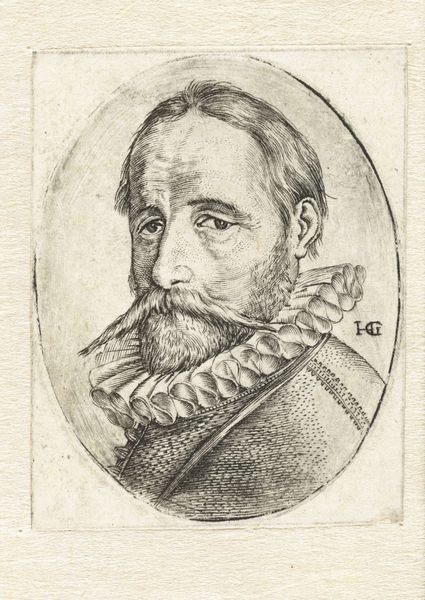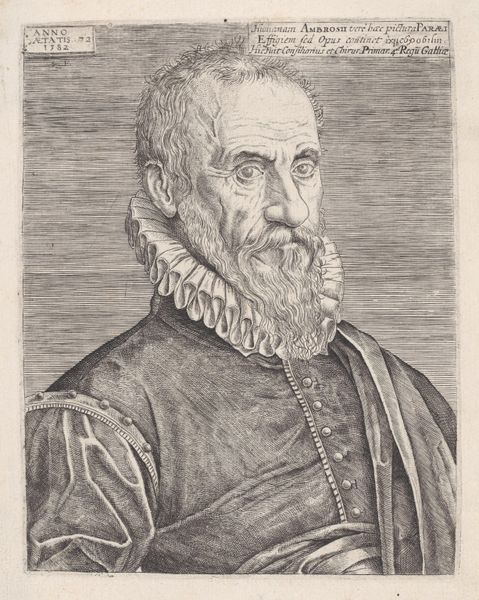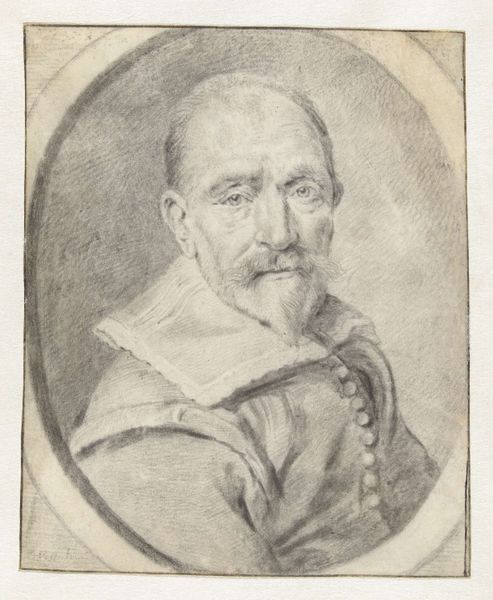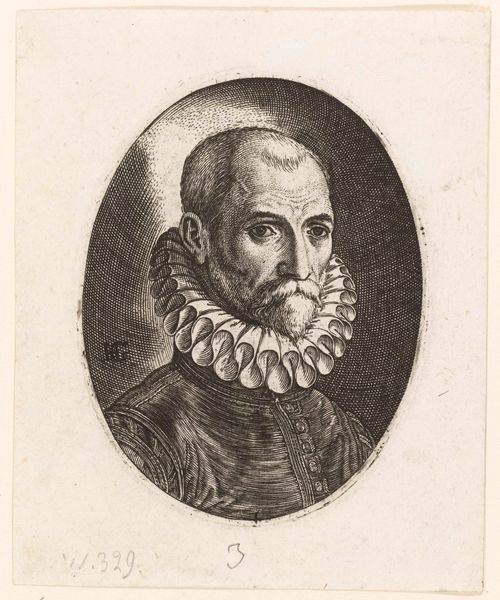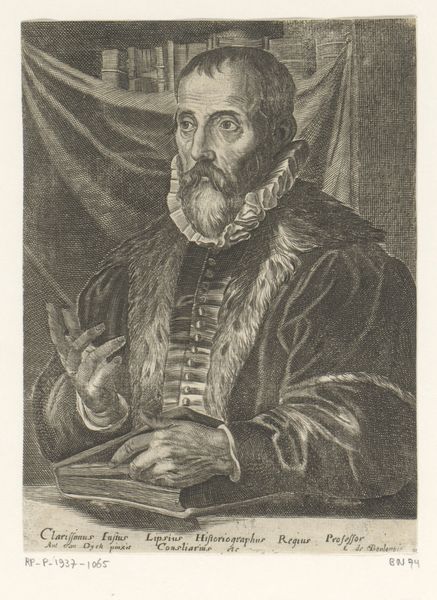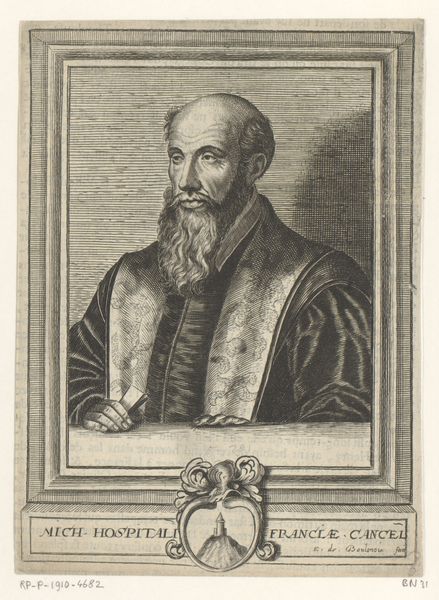
print, etching, engraving
#
portrait
#
baroque
# print
#
etching
#
engraving
Dimensions: height 155 mm, width 134 mm
Copyright: Rijks Museum: Open Domain
Curator: Immediately, I’m struck by the stark contrast and the intricate detail, particularly in the rendering of the Cardinal's face and the fabric of his robes. Editor: This is a print, "Portret van kardinaal Guido Bentivoglio", residing here at the Rijksmuseum. Wallerant Vaillant produced this between 1637 and 1677, using etching and engraving techniques. The texture achieved with the engraving seems incredibly complex, considering the time it was made. Curator: Absolutely. Think about the skill involved. Each line carefully etched or engraved, dictating not just form, but also value and texture. And those decisions, like emphasizing the fall of light on his collar, it gives it all such tangible presence. What power that imparts to the subject! I want to consider the distribution networks of this era and who controlled production and consumption of images. How might the availability of such portraits bolster a Cardinal’s image? Editor: Well, portraits such as these clearly served as vital propaganda. Consider the Cardinal’s role within the Catholic Church and broader European politics. This image would solidify his presence, visually reminding people of his authority and status in Baroque society. Think of how strategically such portraits would have been deployed within the Vatican or amongst noble families. Curator: Precisely. And to go back to the "how," examining the paper, the inks—tracing their provenance gives insight to Vaillant's network. How many hands did this work pass through to become accessible to the broader population? Printmaking enabled access but also depended on established social routes. Editor: That reminds us too that prints like these helped codify and circulate visual languages. Notice the way Vaillant employs standard portrait conventions of the era? The gaze, slightly averted, communicates intellect and piety but avoids confrontation. The composition suggests an image meticulously designed to convey power, which can, in fact, only achieve power within particular institutions and social structures. Curator: So it’s both about the object *and* the infrastructures around it. That interdisciplinary approach is essential. Editor: Exactly. Studying the history of imagery reveals that these kinds of aesthetic techniques have tangible social consequence. What better case study than a Cardinal consciously cultivated through imagery! Curator: Well, thinking about the physical act of creation gives even more resonance to the print, I see the labour as such a part of this Cardinal’s story now. Editor: Yes, it all folds together in a complex history.
Comments
No comments
Be the first to comment and join the conversation on the ultimate creative platform.
